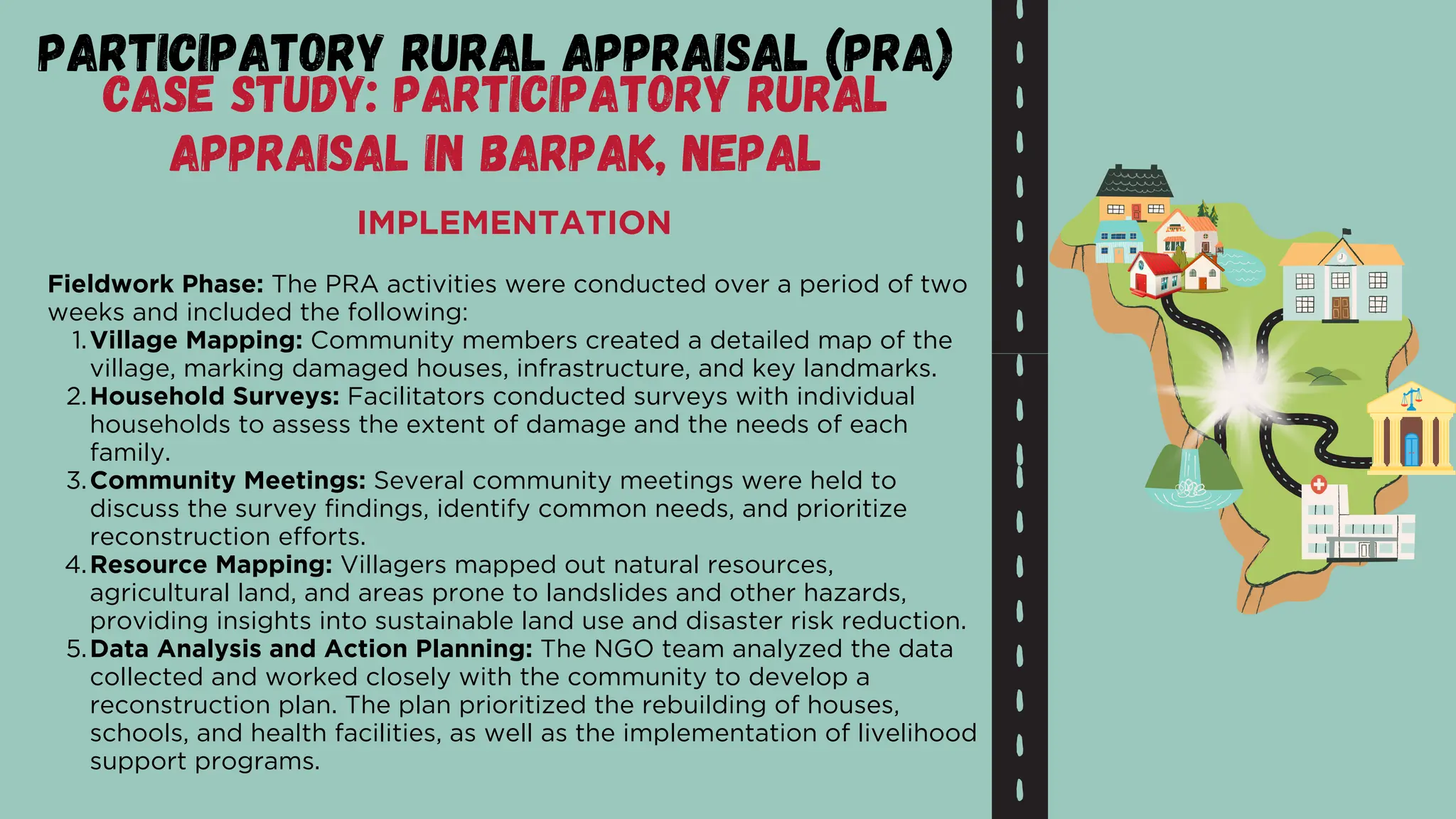Participatory Rural Appraisal (PRA) is a methodology that involves local communities in assessing their needs and planning development projects, emphasizing local knowledge and active participation. A case study in Barpak, Nepal, demonstrated PRA's effectiveness in post-disaster reconstruction, leading to empowered communities and inclusive development. The process highlighted the importance of partnerships among NGOs, local government, and community members for sustainable outcomes.

















![advantages
participatory rural APPRAISAL (PRA)
Devolution of
management
responsibilities [to
the local people]](https://image.slidesharecdn.com/participatoryruralappraisal-240313015136-9d088d14/75/PROJECT-DEVELOPMENT-PARTICIPATORY-RURAL-APPRAISAL-PRA-18-2048.jpg)

















